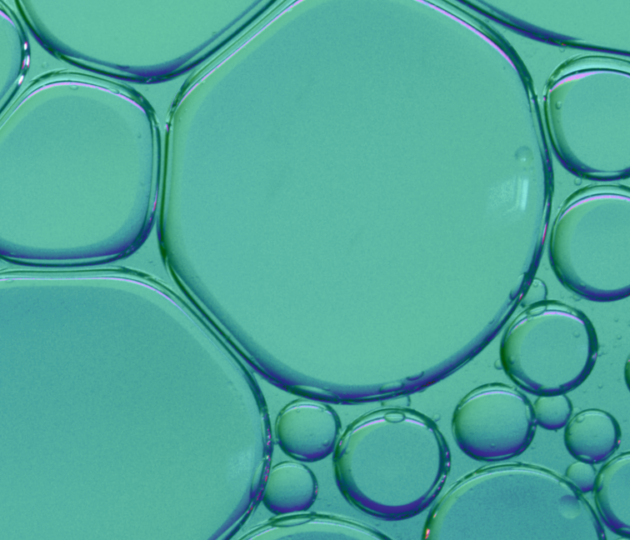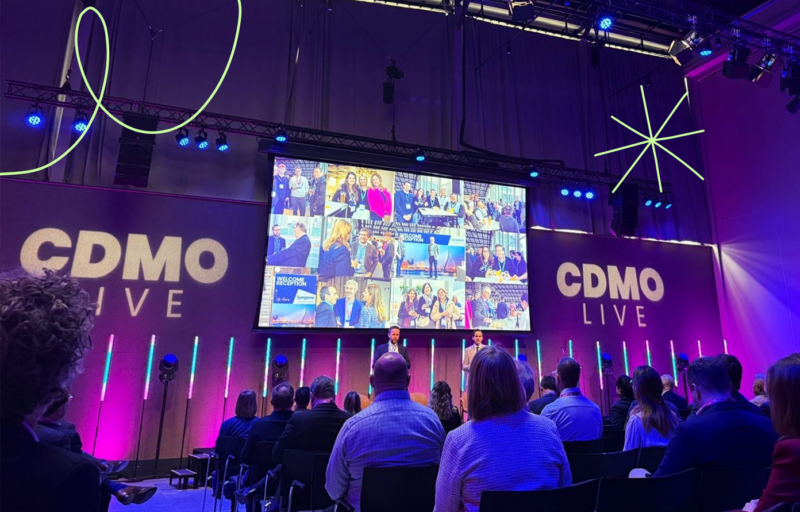blog:
When will my life science brand be famous? Part 2

Branding Series: Part Two (of five)
When will my life science brand be famous?
We still can’t answer that…but in part two of this blog series, our Senior Commercial Manager, Eleanor Harms, discusses the approaches that can help your brand increase salience and build greater brand fame.
Part Two
Seeing is believing
In the last blog, we looked at what brand fame is and why it matters in life science and B2B branding today, particularly in a post-pandemic market.
We highlighted three elements that were important to building brand fame:
High visibility
Being talked about
Creativity
Let’s now take a better look and discuss what being highly visible means in life science marketing today.
How do we define and measure life science brand visibility?
Once again we’ll start by explaining how this term differs from ‘brand awareness’. Brand awareness is the measure of an audience’s familiarity with a brand but as we highlighted in the last blog, brand awareness doesn’t automatically equal brand fame. And a central part of building good brand awareness process is brand visibility, which refers to how often a target audience sees a brand on different marketing channels.
As logic would have it, the more you see a brand across different marketing touchpoints, the more it enters your consciousness.
A good example is the battery brand Duracell who has managed to stay relevant and connected far beyond its bunny commercials. It recently used Twitter and Instagram to partner with Actor Finn Wolfhard (of Stranger Things fame) for its #GameLongerGetaway campaign, creating mentions and positive engagements with a younger audience.
How to improve your life science brand’s visibility:
Forget hyper-targeting, think omnipresence
Our Head of Marketing Strategy, Jeff Sternstein, reflects:
Do you know where all of your target audience get their information and when they are most receptive? I don’t. I wish I did.
For over 30 years the agency teams I’ve worked with have been looking to find the singular most efficient and effective channel for gaining the attention and engagement of target audiences.
Do you spend all your free time immersed in industry trade journals? I don’t. I read key articles occasionally, but my life is far more varied. I use a range of social media, I attend events, I use some apps, I watch TV, and watch streaming services on-demand.
It’s because of the varied nature of our lives and the increasing number of channels demanding our attention that we need our audiences to choose their own ways to interact with us (your brand) and to provide as many occasions as we can afford.
Costs for omnipresent placements used to be astronomical. They drove the targeting discipline that formed my early years in marketing and advertising. The cost of wasted impressions has obviously declined dramatically, enabling us to pay for the clicks we get, and not the ones we don’t.
Inherent in the activation of an omnipresent marketing approach is the increased opportunity for multi-variate testing. We can learn from omnipresence and refine from this broader base of exposure the highest ROI approaches and most effective messages to achieve our goals.
There have been massive surprises in my experimentation with omnipresence including the effectiveness of Facebook and Instagram for subjects as varied as clinical trial enrolment, physician engagement, and business-to-business offerings.
Many in marketing have heard of the “Rule of 7” – a marketing maxim developed by the movie industry in the 1930s, based on the discovery that a certain amount of advertising and promotion was required to compel someone to see one of their movies. It was seven (7). This must hold true as a minimum in B2B categories where decisions are often more complex than which movie to see.
Omnipresence expedites frequency to achieve awareness and acceleration of consideration.
Costs of omnipresence can be driven down by focusing on micro-content, small bits of creative in paid or earned media that drive deeper engagement. Costs can also be minimized by including lower-cost approaches such as social media and pay-per-click GoogleAds.
So, has hyper-targeting gone away? No. It has its place further down the funnel and can work well to push consideration to conversion. It also works well when you have intimate knowledge of your buyer. But, for top-of-mind awareness building, the net will work better if cast a bit wider, will build frequency to expedite awareness better and accelerate learning.
Consistent creative on all channels
Our Senior Designer, Lisa McFarlane, reflects:
Consistency is key when building a recognisable and meaningful brand.
The majority of first brand impressions happen online, keeping a consistent and clear style creates brand awareness and builds trust.
For example, a potential client comes across your company on LinkedIn, your social content has got their attention and they want to learn more, upon landing on your website they see the visual style has changed. This is jarring for the user and they may not trust they are in the right place. This interruption in their journey may result in them leaving the website and disengaging with the brand.
Consistent creative across all channels and touchpoints ensure a seamless journey for your audience and prospective clients.
This includes consistency of all brand assets including but not limited to:
- Typography (fonts/alternatives ie, system font/hierarchy/weight)
- Colour (web and print breakdowns)
- Logo (safe zone/colour variation/placement/size)
- Imagery (style/image quality/content)
- Assets (iconography/patterns/illustrations)
- Editorial (regional variations/Tone of voice/case style consistency/house style)
Think beyond the visual
Our Internal Head of Marketing, Gemma Dunn, reflects:
Let’s think about Apple for a minute. As a brand it is well known and holds a great deal of equity in its visual identity. However, go beyond the apple icon we all recognize and think about the brand as a whole. Whilst Apple is generally polarized – for every iPhone lover who can’t live without their device, there’s someone who’s fundamentally opposed to the brand. Whichever end of the spectrum you lean toward, you know Apple and can easily distinguish it from other brands.
From Apple’s ads to its packaging and stores the Apple brand messaging is simple and seamless. But simple isn’t easy, simple takes time, resources, budget and dedication to get it right consistently over and over again.
Making the complex simple is one of the biggest challenges marketers face and it often takes years of experience to nail it.
Going beyond your visual identity to convey your message, promote your differentiators and make audiences feel a certain way is a crucial part of your branding.
Your visual identity gives people a visual reference and something to aid recall. Whereas your messaging – and we’re talking about everything from your website content and social media posts, to your job ads, your facility signage and letterhead, to your tradeshow stand and staff lanyards, or your packaging and sales brochure that’s where the magic lives. It’s in your microcopy (think about the messaging on your 404 error page) where you really bring your brand to life and create brand equity.
If your visual identity doesn’t match the rest of your brand you’re in trouble. Your brand should be seen as something that is living and breathing. It needs nurturing with regular attention to help it grow and evolve. Apple’s brand is iconic but go back in time and you will see its subtle evolution and how the brand has refined over time to engage new and existing audiences.
Don’t allow your brand to get stale. Give it some regular TLC and check in with your stakeholders to ensure their perceptions match-up with your objectives.
Whether you’re looking for a commercial partner or curious about our business, this could be the start of a beautiful relationship.
Submit a form or give us a call…
Related news, insight and opinion





